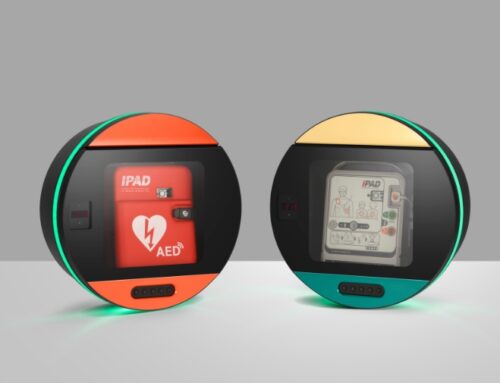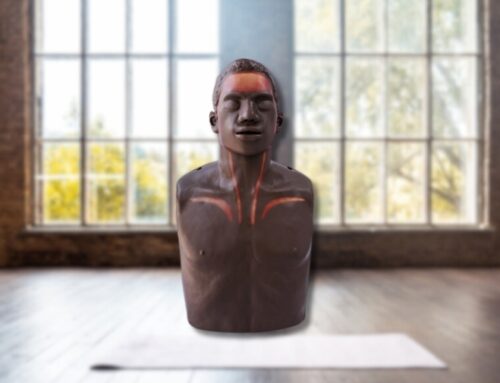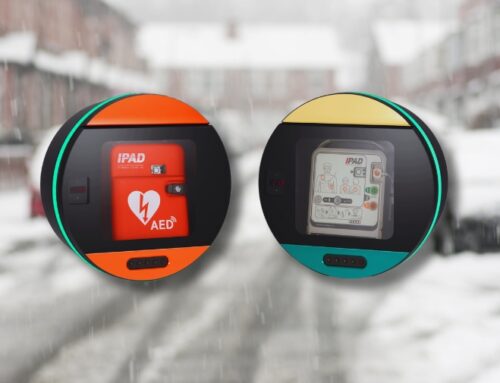[vc_row][vc_column][vc_column_text]A defibrillator is an essential piece of lifesaving equipment that can literally save lives when someone has a sudden cardiac arrest (SCA). Indeed, every moment spent without CPR and defibrillation reduces a casualty’s chances of surviving by 10% – meaning you have just minutes to save a life when someone collapses from one in front of you.
However, just having a defibrillator in your immediate environment isn’t enough. You also need to make sure that people know how to use a defibrillator, and that the unit is kept in fully working condition.
These are the must-do things when you get a defibrillator. Think of it as a beginner’s guide to defibrillators and how you can look after yours.
1. Store your defibrillator somewhere accessible
When you’re considering how to look after a defibrillator, the first step needs to be putting it somewhere safe and secure – but also somewhere that can be easily accessed by anyone who needs it. After all, when defibrillators are needed, they’re needed in a hurry.
The good news is that our iPAD automated external defibrillators (AEDs) are compact and lightweight enough to be stored almost anywhere, from deeper desk drawers to cabinets and wardrobes, in your car or on shelf racking. However, our recommendation would be to purchase a DefibSafe secure external defibrillator cabinet, which are IP66 waterproof, corrosion and impact resistant, and come in unlocked or keypad-locked variants. DefibSafe cabinets even feature a unique location code that allow emergency services know exactly where you are when you need them.
2. Clearly communicate where your defibrillator is and how to access it
[/vc_column_text][vc_empty_space][vc_single_image image=”2537″ img_size=”full”][vc_empty_space][/vc_column][/vc_row][vc_row][vc_column][vc_column_text]Of course, it’s no good putting your defibrillator somewhere safe and accessible if you don’t tell anyone how they can access it. This is especially true if you do have it in a code-locked DefibSafe cabinet, but applies however you choose to store your AED.
How you go about doing this will depend on the nature of your organisation or environment. If your defib belongs to your company, for instance, all of your employees should be made aware of its location and how to access it. Or if it’s safely stored in a DefibSafe cabinet attached to someone’s house as part of a neighbourhood watch scheme, setting up a neighbourhood WhatsApp group and sharing the code on there could be a literal lifesaver.
3. Learn how to use your defibrillator and train others in its use
Modern AED units are incredible pieces of technology designed to be as easy as possible to use. In an emergency, we’re confident you could pick up an iPAD Saver or SP1 and follow the voice prompts and provided images in order to administer effective treatment.
Having said that, with only a lifesaving window of minutes when someone experiences a cardiac arrest, it pays to be prepared. So despite the fact that AEDs don’t outright require specialist training to use, we’d certainly suggest having a lifesaving skills trainer in to teach you and your team the basics of using your AED – along with the basics of CPR, and how to administer both it and defibrillation in an emergency.
St John’s Ambulance are one of the largest providers of this training, so starting there is always a great idea. We also provide bespoke training on our iPAD units, however, so contact us to find out more.
4. Set regular maintenance reminders
[/vc_column_text][vc_empty_space height=”16px”][vc_single_image image=”2538″ img_size=”full”][vc_empty_space height=”16px”][vc_column_text]Cardiac arrests don’t happen all that often. So when they do, you’ll want your defibrillator ready to go in an instant. It wouldn’t pay to find you need it and the battery is dead, or it’s developed a fault after being left for a long time in storage.
That’s why setting regular reminders is another must-do thing when you get a defibrillator.
At WEL Medical we recommend giving your AED at least a monthly check (and ideally a weekly one) to make sure it’s working properly. On our most popular unit, the iPAD SP1, that means the LED screen is displaying all icons correctly, with none missing and no black cross present on the display. Make sure to change the battery when the AED indicates a ‘low battery’ status, and be mindful that a pad indicator that’s half full has less than three month’s usable life left.
How to look after a defibrillator
In general, our do’s and don’ts for looking after your defibrillator are:
| DO | DON’T |
|
Bring your AED inside at night OR store it in a waterproof, heated cabinet like a DefibSafe cabinet. Check your AED at least once a month and ideally once a week, replacing batteries and pads when the AED indicator tells you to. Check the heater on your outside cabinet is working by checking the lights on the outside your DefibSafe cabinet. If you are not using a DefibSafe cabinet, contact your manufacturer for advice on how to check it’s working correctly. Keep the moving parts of your DefibSafe cabinet well-oiled and lubricated so that water doesn’t seep in and freeze, causing it to seize up. Open and close the cabinet at least once a month to ensure the moving parts in the lock continue to work. Also, lubricate the parts periodically with a silicone-based lubricant, like GT-85 or a PTFE spray. |
Leave your defibrillator inside a car during cold weather, as cars don’t protect against the cold. Store your AED outside in a cabinet designed for indoor use. Leave your AED for long periods of time without checking it or using it. Leave your DefibSafe cabinet for long periods of time without opening it or lubricating the door mechanism. |
5. Register your defib with The Circuit
As we’ve mentioned above, when you need a defibrillator there’s no time to spare – so you’ll want to find your nearest one as quickly as possible.
Thankfully, there is a project called The Circuit, a national defibrillator network that lets lifesavers pinpoint their nearest AED should they arrive on the scene without the requisite lifesaving equipment.
To join the Circuit, visit their registration page here.
For more guides to defibrillators for first time buyers, visit our blogs about choosing the right defibrillator and what happens when you use a defibrillator.
Or to discuss buying your first defibrillator, or getting CPR and defibrillation training, get in touch with us here.[/vc_column_text][vc_empty_space][/vc_column][/vc_row][vc_row][vc_column][vc_column_text]
Related articles
- Choosing The Right Defibrillator
- What Happens When You Use A Defibrillator?
- World Heart Day: Heart Attack or Cardiac Arrest?
- World First Aid Day: CPR Guidance in a Covid-19 World
- Places You Wouldn’t Think Need a Defib (But Really Do!)
[/vc_column_text][/vc_column][/vc_row]





